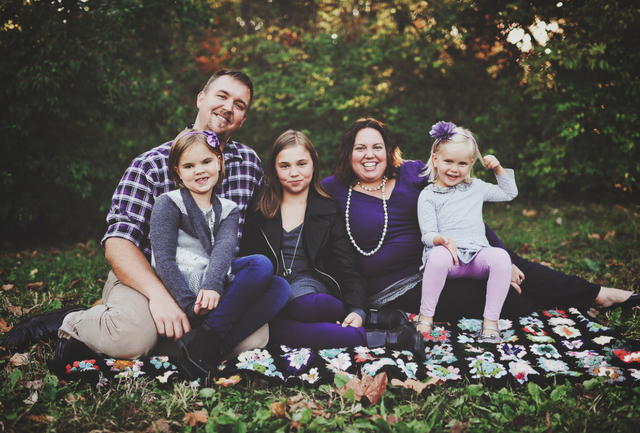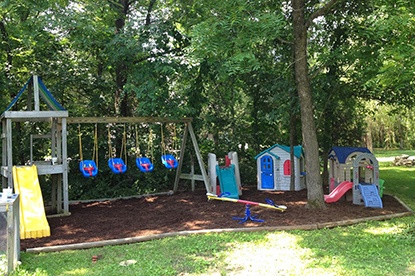
By the time I had my third child, I knew exactly what it would take to call a child care perfect, and through the most fortunate of circumstances I found it.
From nine months on my daughter was able to attend a small in-home child care setting where she was fed home cooked meals, a steady diet of produce varied enough that she would eat most things I served her at home, protein-rich Greek (not sugar-laden) yogurt, and a big bowl of chocolate pudding while she donned a birthday hat on the day she turned one. All this took place under the adoring watch of a woman she called Miss Emma, a former student of mine turned mom and caretaker extraordinaire.
During the time I had to be away from my daughter for work my phone would ding with updates of pictures of my child being carted to gymnastics classes, running free in the green fields adjacent to public parks, splashing and giggling during water play, or wrist deep in the latest sensory table item. These pictures were captured in albums that went home on holidays. As my youngest engaged in these activities, she was slowly becoming fluent in Spanish as well. Miss Emma offered a bilingual setting to help our children’s brains and hearts grow bigger. To top it all off, I paid around $150 a week for this toddler paradise with the summers off (a presumed must have for this two teacher family). It was heaven. And it lasted all of 27 months.
I’ll never forget the moment my provider sent us a text urging us to check our emails as winter break came to close. As I read over her rationale for closing her in-home child care, I felt more heartbroken than angry. I went to my daughter’s room and stared at her precious face wanting to comfort her over a loss she couldn’t even fathom. She had no idea that her normal everyday experience was a gift denied to many. Knowing how deep her love was for Miss Emma, I felt all the responsibility of a mother who had to comfort a child after her first break-up. I kept thinking, “her world is crashing down, and she doesn’t even know it.”
I could understand Miss Emma’s decision to close her in-home child care—each time I wrote Emma a check the first of the month I tried to ignore the fact lurking in both our hearts; It simply was not financially worth the time, emotional toll, and absurdly long hours for her to be a child care provider, no matter how much those little smiles filled her heart and home with joy.

Despite all these perks, it was cost and availability that drew me to Miss Emma’s in-home child care initially. I was desperate to find a place cheap enough to justify working. Having grown up with all the benefits of a stay-at-home mom, the working mom guilt was and continues to be a real struggle for me. I quell that guilt by priding myself on what I contribute to our home and the lifestyle it allows us to lead. Shelling half of it over for child care would spike the guilt, as the cost to benefit ratio would be thrown out of whack. Once I watched Emma in action, I slowly began to realize how deeply unfair her wages were. I paid local high school students more for a dinner out with my husband than a grown woman with a master’s degree in education to provide developmentally appropriate activities, well balanced meals, and genuine love for my child all day.
Not long after the in-home child care closed, I mentioned in passing to Emma, “We would have paid you more.” She seemed surprised. It wasn’t until I contemplated this blog post that I realized my attempt to garner a living wage caused me to force someone to work for a non-living wage. My desire to obtain a comfortable lifestyle meant another human had to perform duties no labor union would ever allow, 10 hour plus workdays five days a week with no benefits or overtime. There has to be a better solution for mothers on both sides of the child care door. Our children deserve it. Our humanity demands it.
Read the companion piece to this story, written by Miss Emma, Danielle’s child care provider.
Mutually supportive relationships between families and child care providers are particularly important during transitions. While changes in child care plans can be disruptive for everyone, open and respectful two-way communication can help families and providers navigate even the trickiest situations. Interested in reading more stories from parents like Danielle? Visit our Family Stories blog category.




